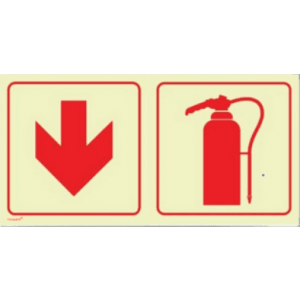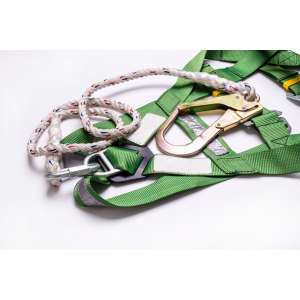Forklift Re-Certification - Per Person
Was R1012.00 Excl VAT
R1140.00 Excl VAT
How to qualify for a discount?
WHO SHOULD DO THIS FORKLIFT RE-CERTIFICATION TRAINING?
This course should be done by employees who are responsible for operating a forklift in the workplace and who require refresher (re-certification) training.
WHY IS THIS TRAINING IMPORTANT?
This course provides evidence that persons who operate a forklift in the workplace have been trained and are competent to do so. Attendees will be able to conduct pre and post inspections to ensure the performance of the forklift to handle the loading and storage of freight by using the equipment and its accessories in the required manner. Attendees will also be able to access emergency systems and services in the event of an incident or accident.
BASIC COURSE CONTENTS
This course includes the following important aspects;
Mechanical appreciation: Including, operator maintenance areas, cooling system, lubrication system, fuel system, electrical system, gauges, tyres, differential, inching equipment, braking system, mast and forks, hydraulic system, steering, transmission, diagnosing engine faults and driving the forklift truck correctly.
Refuelling: Including, safety procedures, refuelling petrol and diesel-powered forklifts, refuelling gas-powered forklifts, the traction battery, replacing the fork truck battery pack and filling in the fuel usage log.
Pre-operating Inspection: Including, checking the mast, checking the tyres, overhead guard inspections, engine compartment inspections, brakes and hydraulics, the driver’s compartments, lifting gear, in-cab checks and inspections, setting the driving position, pre-start check of the controls, checking lifting controls and functionality, starting the fork truck, checking ancillary equipment and controls, shut-down checks and inspections and checking driving controls and functionality.
Maintaining a Logbook: Including, the logbook, fork truck checklist fuel usage log, filling in the fuel usage log and the accident report.
Operator Controls: Including, types of operating controls driving controls and lifting controls.
Safety: Including, pre-operating safety precautions, start-up safety precautions, shut-down safety precautions driving safety precautions, the relationship between load and stability of a fork truck, load chart rating, the seesaw principle of leverage, the principle of leverage, hazardous cargo safety precautions, container loading safety precautions, refuelling safety procedures, driving on public roads, emergency services, protective clothing and general housekeeping.
Manoeuvring: Including, manoeuvring/clearance, towing, manoeuvring through a practice course with & without a load, observation, hand signals and the horn.
Loading and Off-loading: Including, loading a container, off-loading a container, loading a trailer, off-loading a trailer, loading a boxcar and off-loading a boxcar.
Stacking: Including, storage areas, store layouts, stacking methods, pallets, the handling of flat pallets, block-stacking, handling of interlocking cage type pallets, bin pallets stacking, steel stacking and hazardous material stacking.
Handling Cargo: Including, handling cargo with pictorial markers, warning diamonds, lifting and transporting procedure, hazardous cargo, handling drums using a drum attachment, attachments and handling paper rolls using paper clamps.
COURSE DETAILS
The course duration is one (1) day.
Training can be conducted:
On-site: for a minimum of four (4) attendees per group. A forklift should be available for practical sessions.
The course programme includes facilitator presentations, readings, individual activities, group discussions and skill application exercises. All learners are encouraged to participate and apply themselves from the first day so that their learning will be interactive and stimulating and their training can be effective and useful to them.
COURSE COSTING
The cost displayed is per person for the course duration.
BENEFITS OF THE TRAINING
Attendees who are determined to be competent will be able to:
Demonstrate how to operate and work with a forklift in the safest and most competent way possible.
Understand and explain the principles the machine works on.
Explain the different methods of handling and storing freight.
Operate equipment in accordance with laid down organizational and legislative standards and procedures as well as manufacturers guidelines.
Perform pre-check and operational checks, operating, shutting down and parking of the forklift.
Explain the use of available support systems and emergency services in case of incidents and accidents.
TRAINING OUTCOME
Successful attendees will receive a certificate of competence and licence to operate a forklift.
ACCREDITATION
The course is accredited by the Transport Education Training Authority (TETA).
Forklift training (Re-certification) is aligned to the registered unit standard, ID 242974 (Unit Standard Level 3) with 7 credits. Attendees will be assessed against the outcomes of the unit standards by completing a knowledge assignment that covers the essential embedded knowledge stipulated in the unit standards, and by compiling a portfolio of evidence that provides proof of your ability to apply the learning to your work situation.
Add a review
Other Products that might interest you
-
Sale!
Add to Cart
View
Details

WCA De-registration
Was R5520.00 Excl VAT
R2466.42 Excl VAT -
Add to Cart
View
Details

Fire Extinguisher and Red Arrow Direction in Frame (combined)
R85.50 Excl VAT -
Add to Cart
View
Details

Running Man Left and Green Arrow Direction in Frame (combined)
R85.50 Excl VAT -
Sale!
Add to Cart
View
Details

Working At Heights: Fall Arrest Systems - Per Person
Was R1035.00 Excl VAT
R899.68 Excl VAT




Double pallet handler forklift training